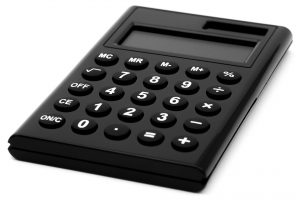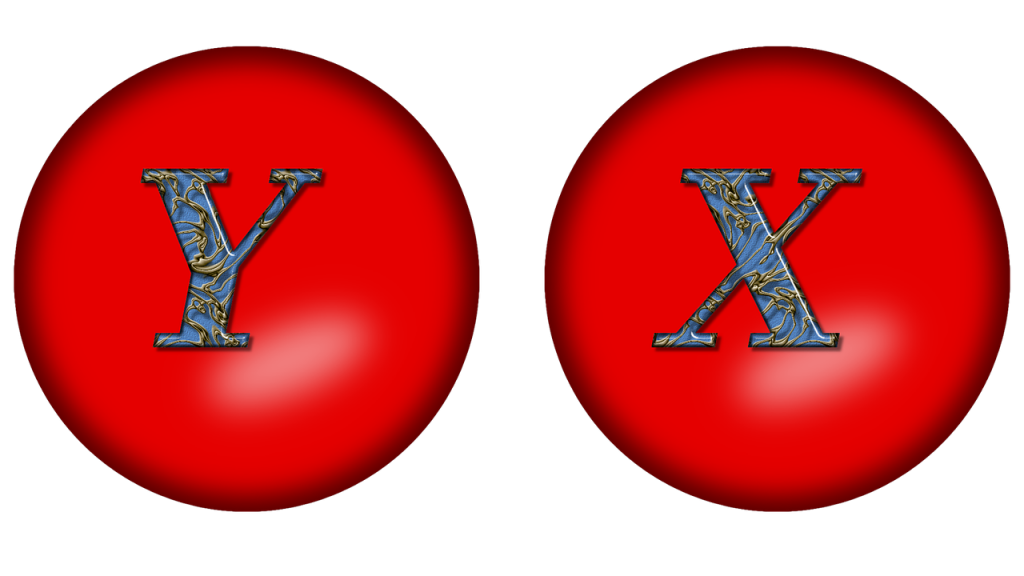
Integers are one of the key recurring elements on the GMAT Quant section, so if you’ve started studying, you probably have some questions. What is an integer? Is zero an integer? What does it mean if integers are consecutive?
The good news is, you’ve almost certainly learned everything you need to know about working with integers in middle and early high school math. The bad news is that these rules and properties have probably been relegated to dusty, moss-ridden corner of your brain—and even if they haven’t, you’re going to have to apply them in novel ways on the exam.
Luckily, you’ve come to the right place! In this post, we’ll tell you everything you need to know about integers for the GMAT. We’ll give you a refresher on all the relevant rules and properties of integers, tips and tricks for every kind of integer question you’ll see on the GMAT, and some example questions with thorough explanations so you can see these strategies in action.
What Is an Integer? Is 0 an Integer?
Integers are all multiples of 1. They are all the positive whole numbers and their negative opposites, as well as zero. They do not include fractions, percentages, or numbers with decimals (which rules out figures like pi).
Here is the set of integers around and including zero:
Not sure how or what to study? Confused by how to improve your score in the shortest time possible? We've created the only Online GMAT Prep Program that identifies your strengths and weaknesses, customizes a study plan, coaches you through lessons and quizzes, and adapts your study plan as you improve.
We believe PrepScholar GMAT is the best GMAT prep program available, especially if you find it hard to organize your study schedule and don't want to spend a ton of money on the other companies' one-size-fits-all study plans.

{ … -3, -2, -1, 0, 1, 2, 3 … }
The ellipses indicate that the set of all integers goes on to infinity in either direction, because every single whole number and its corresponding negative is an integer. Note that 0 is an integer too (though it does have some special properties, which we’ll get into below.
Yep, that’s it! The integer as a concept is pleasantly neat and simple. However, it gets a little trickier when we start doing math with them, as they behave in very specific ways.

Key Properties of Integers for the GMAT
Now that you understand the concept, let’s go over the types, rules, and properties of integers in mathematical equations. Note that 0 and 1 are integers with special properties: they have their own subsection devoted to them below.
Above all, you should think of the following rules as just shortcuts. Of course, you already know how to multiply, divide, add, and subtract whole numbers. These properties just make it easier to do so in your head: they help you get to the right answer quickly by ruling on what can and can’t work, given how certain kinds of integers always behave. Doing this kind of efficient mental math is the key to mastering the GMAT Quant section as a whole, and it’s absolutely essential for properties of integers GMAT questions.
Even and Odd Integers: Definitions
At this point in your life, you’re almost certainly familiar with even and odd numbers. Still, you’ll need this baseline info to understand subsequent properties, so make sure you know all of the following definitions before moving on.
Even:
- Any number that results in an integer when divided by 2 is an even integer.
- Even integers end in 0, 2, 4, 6, or 8.
Odd:
- Any integer that isn’t divisible by 2 (as in, doesn’t result in an integer when divided by 2) is an odd integer. Note that I didn’t say “any number”— 4.5 is not divisible by 2, but it’s also not an integer, so it’s not odd.
- Odd integers end in 1, 3, 5, 7, or 9.
Both:
- Non-integers can’t be even or odd. Only integers can be even or odd, because decimal places automatically rule out divisibility by 1 or by 2. So if you see a question on the GMAT that specifies that a certain number is even or odd, you know it must be an integer.

Adding and Subtracting With Integers
The rules for adding and subtracting with integers are fairly intuitive as well, but just make sure that you’ve reviewed all of them before moving on.
Any integer plus or minus another integer results in an integer.
$$4 + 5 = 9$$
$$4 – 5 = -1$$
Negative and positive
Negative and positive numbers have particular rules when it comes to addition and subtraction:
- Adding a negative integer is the same as subtracting the positive.
$$4 + (-5) = 4 – 5 = -1$$
$$(-4) + (-5) = (-4) – 5 = -9$$
- Subtracting a negative integer is the same as adding the positive (double negatives cancel out).
$$4 – (-5) = 4 + 5 = 9$$
$$(-3) – (-4) = (-3) + 4 = 1$$
Odds and Evens
Adding or subtracting two of the same kind results in an even integer; adding or subtracting odd and even results in an odd integer. So:
Want to improve your GMAT score by 60 points?
We have the industry's leading GMAT prep program. Built by Harvard, MIT, Stanford, and Wharton alumni and GMAT 99th percentile scorers, the program learns your strengths and weaknesses and customizes a curriculum so you get the most effective prep possible.

- Odd + or – odd = even
$$5 + 7 = 12$$
- Even + or – even = even
$$12 – 8 = 4$$
- Odd + or – even = odd
$$8 + 3 = 11$$
$$8 – 3 = 5$$

Multiplying and Dividing With Integers
Multiplying and dividing with integers is right where things start to get a little more complex. It’s essential that you understand all of these moving parts before hitting the examples below.
First, the basics: multiplying integers with other integers always yields a result that is also an integer. However, dividing with integers isn’t so straightforward. 3 / 5, for example, would yield a fraction or a decimal, which is by definition not an integer. Same with 5 / 3.
Negatives and Positives
When multiplying or dividing numbers with the same sign, the result is always positive. When multiplying or dividing numbers with a different sign, the result is always negative. So:
- Negative × or / negative = positive
$$(-5) × (-5) = 25$$
- Negative × or / positive = negative
$$(-5) × 5 = (-25)$$
- Positive × or / negative = negative
$$5 × (-5) = (-25)$$
- Positive × or / positive = positive
$$5 × 5 = 25$$
Odds and Evens
Any integer multiplied by an even number is even; otherwise it’s odd:
- Odd × odd = odd
- Even × even = even
- Odd × even = even
Want to Identify YOUR GMAT Strengths and Weaknesses?
Our proprietary GMAT Diagnostic Assessment creates a customized study plan for you that takes you from registration all the way to test day! It is included with every account and proven to significantly maximize your score.
Get your personalized assessment as part of your 5 day risk-free trial now:

Multiples and Factors
A multiple is the product of an integer and another integer. In other words, any integer that is perfectly divisible by another integer (with nothing left over) is called a multiple of the latter integer. For example, 20 is a multiple of 4, because 20 is divisible by 4.
Factors, also called divisors, are the positive integers that can be multiplied together to create a multiple. For example, 4, 5, 2, 10, 1, and 20 are all the factors of 20. 3 is not a factor of 20, because you can’t multiply 3 by any other integer to get to 20.
Together, we can simplify these rules into an always-true equation:
$$\Multiple/\Factor=\Integer$$
The greatest common factor, or greatest common divisor (GCF or GCD), is the largest factor shared by two numbers. For example, the greatest common factor of 20 and 30 is 10, since 10 is the largest integer that goes into both.
A cousin of the greatest common factor is the least common multiple (LCM). The LCM is the lowest multiple that two factors share. So the LCM of 20 and 30 is 60, as both 20 and 30 factor into 60 (but no number lower than 60).
If $x$ and $y$ are integers and $y = xn$ for some integer $n$, then $x$ is a factor (or divisor) of $y$, and $y$ is a multiple of $x$.
Quotient and Remainders
The remainder is what is left over in a division problem. For factors and their multiples, the remainder will always be 0, because factors go into their multiples perfectly, without anything left over. The quotient is how many times an integer can fit into another integer, regardless of what’s left over.
For example: 20 divided by 3 is 6 with 2 left over, because $3 × 6 = 18$. So 20 divided by 3 has a quotient of 6 and a remainder of 2.
When you divide an integer by another integer on the calculator, if the latter integer isn’t a factor of the former, you’ll automatically get decimal places instead of remainders. Using remainders and quotients is a way to do this math in your head—which is why the GMAT Quant section likes to bring them up, as you don’t have a calculator to use.
If $x$ and $y$ are positive integers, the quotient and remainder ($q$ and $r$, respectively) can be represented with these formulae:
$$y = xq + r,\and 0 ≤ r ≤ x$$
For example, if $y$ is 20 and $x$ is 3:
$$20 = (3)q + r$$
$$20 = (3)(6) + 2$$
$$20 = 18 + 2$$
$$0 ≤ 2 ≤ 3$$
$$q = 6, r = 2$$
So $y$ is only evenly divisible by $x$ if the remainder $r = 0$.

Properties of the Integer 0
As indicated above, zero is an integer. But it does have its own special properties:
- 0 is an even integer (because 2 goes into it 0 times)!
- 0 is is the only integer that is neither positive nor negative. So if you are asked about “negative numbers,” this doesn’t include zero. But if you are asked about “non-positive” or “non-negative” numbers, this does include zero.
- Any number plus or minus 0 is that number:
$$n + 0 = n; n – 0 = n$$
- Any number multiplied by 0 is 0:
$$n × 0 = 0$$
- You cannot divide by 0:
$$n/0 = \undefined$$
Properties of the Integer 1
1 has some special properties as well.
- 1 is an odd integer.
- Any number multiplied or divided by 1 is itself:
$$n × 1 = n, n / 1 = n$$
- Any number other than zero divided by itself is 1:
$$n/n = 1, \if n ≠ 0$$
- The reciprocal of any number is 1 over that number. Any number other than zero multiplied by its reciprocal equals 1:
$$n × 1/n = 1, \if n ≠ 0$$
- Multiplying a number by -1 changes the sign but not the absolute value:
$$5 × 1 = 5; 5 × (-1) = -5$$
Prime Numbers
Prime numbers come up again and again on the GMAT, so they’re a key integer concept to review.
As you likely already know, prime numbers are positive integers that can only be divided by itself and 1. In other words, a prime number only has two factors: 1 and itself. 1 is not considered prime, because its only factor is itself—it would have to have two factors to be considered prime.
There is a predefined set of prime numbers. The first prime numbers are 2, 3, 5, 7, 11, 13, 17, 19, 23, 29, 31, 37, 41, 43, 47.
2 is the only even prime number, because every even number larger than 2 is divisible by 2 (has 2 as a factor in addition to 1 and itself), and thus can’t be prime.

Prime Factorization
Every integer greater than 1 is either prime or can be broken down into prime factors. The expression of this is called a prime factorization. When you think about it, it makes intuitive sense: when you’re listing out all the factors of a number, any factor that isn’t prime has its own factors other than 1 and itself, and so it can be broken down into those factors, until there’s nothing left but prime (aka indivisible) integers.
As an example, here’s the prime factorization of 30:
$$30 = 5 × 6 = 2 × 3 × 5$$
Any multiple, by definition, will include in its own prime factorization the prime factorization of its factors. For example, the prime factorization of 210, which is a multiple of 30, looks like this:
$$210 = 2 × 3 × 5 × 7$$
210 has to have (2 × 3 × 5) in its prime factorization because, as a multiple of 30, it must include 30’s entire prime factorization. Here’s a slightly more sophisticated example with 9 and 36, a multiple of 9:
$$9 = 3 × 3 = 3^2$$
$$36 = 2 × 2 × 3 × 3 = 2^2 × 3^2$$
36 has prime factors other than 9’s prime factors, but 9 can’t have any prime factors that 36 doesn’t have, because that would mean a number goes into 9 that doesn’t go into 36—which makes no sense.
Exponents and Square Roots
For integer problems, there isn’t too much you need to know about square roots. Just make sure you understand the definition below.
If the square root of a given number is an integer, that means that that the number has to be an integer too and is thus a perfect square. The perfect squares are 1 (12), 4 (22), 9 (32), 16 (42), and so on.

Consecutive Integers on the GMAT
Consecutive integers GMAT problems come up again and again: they’re a quintessential question type, as they have very specific rules with a lot of moving parts, which is exactly the kind of thing that the GMAT loves to quiz you on.
On the exam, you will see sets (defined lists) of certain kinds of integers, marked by the squiggly brackets called braces. You may also see the word “distinct,” as in, a set of distinct integers. Distinct just means different, so no repeated integers. You may also see the word “inclusive,” meaning that the set is inclusive of the first and last numbers (“all integers from 1 to $n$, inclusive” means that this set includes 1 and $n$).
{ -10, -9, -8, -7 }
The above is a set of consecutive integers, or integers that follow each other in order. Consecutive integers can be represented algebraically:
$$n + 1, n + 2, n + 3 … , \where n \is \an \integer$$
Consecutive Even Integers
{ 2, 4, 6, 8 } is a set of consecutive even integers. Consecutive even integers can be represented algebraically as well:
$$2n, 2n + 2, 2n + 4, 2n + 6 … ,\where n \is \an \integer$$
Consecutive Odd Integers
{ 1, 3, 5, 9, } is a set of consecutive odd integers. Here’s the algebraic representation of consecutive odd integers:
$$2n + 1, 2n + 3, 2n + 5, 2n + 7 … ,\where n \is \an \integer$$
Sum of consecutive integers and divisibility
If the number of integers in a consecutive set is odd: the sum of all the integers is always divisible by that number.
Let’s say $c$ is the number of consecutive integers. In the set { 2, 3, 4, 5, 6 } we have $c = 5$ consecutive integers. So the sum of 2 + 3 + 4 + 5 + 6 should be divisible by 5:
$$2 + 3 + 4 + 5 + 6 = 20$$
$$20/5 = 4$$
If the number of integers in a consecutive set is even, the sum of the integers is never divisible by that number.
Let’s again say that $c$ is the number of consecutive integers. In the set { 2, 3, 4, 5 } we have $c = 4$ consecutive integers. The sum of 2 + 3 + 4 + 5 should not be divisible by 4:
$$2 + 3 + 4 + 5 = 14$$
14 is indeed not divisible by 4.

Factorials
Factorials have some properties that intersect with consecutive integer properties, and questions involving factorials also come up fairly frequently on the GMAT. Below are all the rules you need to know.
If $n$ is an integer greater than 1, then $n$ factorial, represented by the symbol $n!$, is the product of all of the integers from 1 to $n$. Examples:
$$3! = 1 × 2 × 3 = 6$$
$$5! = 1 × 2 × 3 × 4 × 5 = 120$$
$$0! \is \the \same \as 1! = 1$$
Factorials and Permutations
Factorials are useful for questions that asked about the number of ways an object could be ordered. Let’s say you have a couch, a sofa, and a table, and you want to see how many ways you could order them consecutively in a room (couch first and then table second, or sofa first and then couch, etc). There are three different items, so the number of ways is 3!, or 6.
These ordering possibilities are also called permutations. There are 6 different permutations in the example above.
You may see permutations in contexts other than factorials as well. For example, the GMAT could have a question giving you 8 kinds of pasta, 3 kinds of sauce, and 2 kinds of vegetables mix-ins and asking you how many types of pasta you could make by combining one of each of these ingredients. In this case, the answer is simple multiplication: $8 × 3 × 2 = 48$
Factorials and consecutive integers
The product of $n$ consecutive integers is always divisible by $n!$
For example, let’s say we are given this set: { 3, 4, 5, 6 }. That set contains 4 consecutive integers, or $n = 4$, so the product of $3 × 4 × 5 × 6$ is divisible by 4!.
$$3 × 4 × 5 × 6 = 360$$
$$4 × 3 × 2 × 1 = 24$$
$$360/24 = 15$$
Other Sets of Integers
You may also see integer sets in other types of patterns. Part of your task will be to come up with algebraic representations for these sets, or to understand what the given algebraic representation means. For example, you might supply something like this for “a set of multiples of 5”:
$$5n, 5n + 5, 5n + 10 …, \where n \is \an \integer$$
Summary of All Integer Rules and Properties
When you’re sure you comprehend the concepts, check out PrepScholar’s Rules and Properties of Integers for the GMAT, a PDF summary of all the above properties without the lengthy explanations. It’s a nice resource for memorizing the rules you’ll need for properties of integers GMAT questions.

Properties of Integers GMAT Question Examples
Now that you’ve gone over all the rules and properties of integers that you’ll need to know for the GMAT, it’s time to see them in action on real practice questions. All of these are official GMAT questions taken from the GMAC’s free GMATPrep Software.
Data Sufficiency Integer Questions
Data sufficiency questions have their own unique format, and thus their own way of testing you on integers. Below are the key types of data sufficiency properties of integers GMAT questions that you’ll encounter on the exam.
#1: Data Sufficiency with Sets of Integers; Odds and Evens
If $n$ is a member of the set { 33, 36, 38, 39, 41, 42 }, what is the value of $n$?
1. $n$ is even
2. $n$ is a multiple of 3
A. Statement (1) ALONE is sufficient, but statement (2) alone is not sufficient.
B. Statement (2) ALONE is sufficient, but statement (1) alone is not sufficient.
C. BOTH statements TOGETHER are sufficient, but NEITHER statement ALONE is sufficient.
D. EACH statement ALONE is sufficient.
E. Statements (1) and (2) TOGETHER are NOT sufficient.
The question, statement 1, and statement 2 all indicate by themselves that we’re working with integers. The question itself gives us a defined set of only integers, plus non-integers can neither be even nor a multiple of another integer.
As with all data sufficiency questions, we’re being asking us whether statement 1 and statement 2 are enough either by themselves or together to narrow down $n$ to only one possible value. The five different answer options (A through E) represent all the different permutations of the sufficiency of the statements: either 1 is enough by itself but 2 isn’t, 2 is enough but 1 isn’t, both taken together are enough but they’re not enough by themselves, etc.
Like all data sufficiency questions, we can attack this one methodically: First test statement 1, eliminate answer options, then test statement 2, eliminate answer options, and then (if needed) combine them to find the right answer.
So first, let’s use what we know about integers to test Statement 1. Statement 1 says that $n$ is even, so we can rule out 33, 39, and 41, but we’re still left with a bunch of different options of what $n$ could be. Eliminate A and D.
Now onto statement 2. Statement 2 says that $n$ is a multiple of 3. 33, 36, 39, and 42 are all multiples of 3, so that statement by itself will not be sufficient. Eliminate B. Now we only have C and E left.
Finally, let’s see if combining the two statements works to narrow down $n$ to only one possible value. When we put the two statements together—$n$ has to be even, and $n$ has to be a multiple of 3—we’re left with not just one but two potential values for $n$: 36 and 42. Therefore, both statements together are not sufficient to find $n$. Answer E is correct.

#2: Data Sufficiency with Factorials
Does the integer $k$ have a factor $p$ such that 1 < $p$ < $k$?
1. $k > 4!$
2. $13! + 2 ≤ k ≤ 13! + 13$
A. Statement (1) ALONE is sufficient, but statement (2) alone is not sufficient.
B. Statement (2) ALONE is sufficient, but statement (1) alone is not sufficient.
C. BOTH statements TOGETHER are sufficient, but NEITHER statement ALONE is sufficient.
D. EACH statement ALONE is sufficient.
E. Statements (1) and (2) TOGETHER are NOT sufficient.
We know right off the bat that we’re working with integers, because they’ve told us. We are basically being asked to rule out the possibility that the integer $k$ is prime, because it needs to have a factor between 1 and itself. First, let’s use what we know about factorials to simplify the equations given in statement 1:
1. $k > 4!$ means that $k > 4 × 3 × 2 × 1$, which = 24. So $k > 24$.
Now let’s look at the first statement: if $k$ is greater than 24, then $k$ certainly can have a factor that is greater than 1 but less than itself, unless $k$ is prime. If $k$ is 27, for example, then it has only 27 and 1 as factors. Because of this exception of prime numbers, statement 1 is insufficient. Eliminate A and D.
We are now left with B, C and E. Let’s check statement 2. Statement 2 is indicating that there are twelve possibilities for $k$: 13! + 2, 13! + 3, 13! + 4, and so on through 13! + 13. We don’t actually have to do the math for 13!—we can use the knowledge of properties as a shortcut.
13! by definition has 2 as a factor, as it equals $13 × 12 × 11 × 10 × 9 × 8 × 7 × 6 × 5 × 4 × 3 × 2 × 1$, and so adding 2 more would still keep 2 as a factor. Same for all the rest: 13! has 3 as a factor, and adding another 3 to that result still maintains 3 as a factor, and so on. Therefore, for each of the 12 possibilities, there is a factor in between 1 and $k$. Statement 2 alone is sufficient to rule out the possibility of a prime number, and the correct answer is B.
#3: Data Sufficiency with Negatives and Positives; Exponents
If both $x$ and $y$ are nonzero numbers, what is the value of $y/x$?
1. $x = 6$
2. $y^2 = x^2$
A. Statement (1) ALONE is sufficient, but statement (2) alone is not sufficient.
B. Statement (2) ALONE is sufficient, but statement (1) alone is not sufficient.
C. BOTH statements TOGETHER are sufficient, but NEITHER statement ALONE is sufficient.
D. EACH statement ALONE is sufficient.
E. Statements (1) and (2) TOGETHER are NOT sufficient.
This time, we don’t know that we’re working with integers until we take the question and the two statements altogether. Statement 1 tells us that $x = 6$, but that doesn’t mean that $y$ is also an integer—in fact, it doesn’t narrow down the possibilities for $y$ at all, integer or not. Eliminate A and D right away.
Statement 2 tells us that $x^2 = y^2$. By itself, that wouldn’t narrow down $x$ or $y$, so eliminate B. But taken together with statement 1, we know that $x^2 = 6^2 = 6 × 6 = 36$. So $y^2 = 36$ too. You might at first think: ahah! $y$ has to be 6. Both statements together are sufficient.
But that’s incorrect. Remember the rules about multiplying negatives and positives: a negative times a negative is a positive, just as much as a positive times a positive is a positive. Therefore, $y$ could be 6 or (-6). We have two possibilities left for $y$, so, even taken together, the statements are still insufficient. The correct answer is E.

#4: Data Sufficiency with multiples and factors; primes
If $r$ and $s$ are positive integers, is $r/s$ an integer?
1. Every factor of $s$ is also a factor of $r$
2. Every prime factor of $s$ is also a prime factor of $r$
A. Statement (1) ALONE is sufficient, but statement (2) alone is not sufficient.
B. Statement (2) ALONE is sufficient, but statement (1) alone is not sufficient.
C. BOTH statements TOGETHER are sufficient, but NEITHER statement ALONE is sufficient.
D. EACH statement ALONE is sufficient.
E. Statements (1) and (2) TOGETHER are NOT sufficient.
Here we have to determine whether a given equation would result in an integer. First, let’s think about what would have to be true for this to work out: $s$ would have to be a factor of $r$—or, put another way, $r$ would have to be a multiple of $s$. So we can reword the question to simplify it: “Is $s$ a factor of $r$?”
Now, let’s look at statement 1. If every factor of $s$ is also a factor of $r$, that means $s$ must be a factor of $r$ because $s$ is its own factor ($s × 1 = s$). Statement 1 is sufficient, so eliminate B, C and E.
Next, let’s tackle statement 2 with prime factorization. Importantly, $r$ can have more prime factors than $s$, but $s$ can’t have additional prime factors from $r$. Let’s plug in some very simple numbers: $r$ could be 18, which can be broken down into prime factors 2 and 3. And $s$ can be 8, whose only prime factor is 2, and this condition is met. But 18/8 does not yield an integer. Statement 2 is insufficient, so the correct answer is A.
Problem Solving Integer Questions
Problem solving properties of integers GMAT questions are formatted differently than data sufficiency ones, but they still test many of the same skills.
#1: Problem-Solving with Odds and Evens
A box contains 100 balls, numbered from 1 to 100. If three balls are selected at random and with replacement from the box, what is the probability that the sum of the three numbers on the balls selected from the box will be odd?
A. ¼
B. ⅜
C. ½
D. ⅝
E. ¾
We know we’re dealing with integers here, a) because of the condition of “odd” and b) because we can’t split a ball into segments in this case—we’re working with whole balls as units.
We can think of this as a consecutive set of integers from 1 through 100, and so we can use our integer properties to answer this question. The probability of selecting an odd ball at random is 50/100 (ball 1, ball 3, ball 5, ball 7, etc.), or ½—the same as the probability for selecting an even ball (ball 2, ball 4, ball 6, etc.).
From our integer addition properties, we know that for the sum of the three numbers on the selected balls (or selected integers) to be odd, either
a. all the numbers have to be odd, or
b. one of the numbers have to be odd the two other numbers have to be even.
Here’s the probability of each permutation of selecting either all odd or just one odd:
$$\Probability \of \odd, \odd, \odd = ½ × ½ × ½ = ⅛$$
$$\Probability \of \odd, \even, \even = ½ × ½ × ½ = ⅛$$
$$\Probability \of \even, \odd, \even = ½ × ½ × ½ = ⅛$$
$$\Probability \of \even, \even, \odd = ½ × ½ × ½ = ⅛$$
All together, that’s 4 permutations of ⅛:
$$4 × ⅛ = ½$$
The correct answer is C.

#2: Problem-Solving with Consecutive Integers; Factorials and Prime Factorization
If $n$ is a positive integer and the product of all the integers from 1 to $n$, inclusive, is a multiple of 990, what is the least possible value of $n$?
A. 10
B. 11
C. 12
D. 13
E. 14
First, try and recognize the properties at play here. “The product of all the integers from 1 to $n$, inclusive” is simply $n!$, so we have a factorial question. We are told that 990 is a factor of $n!$, so $n!$ is a multiple of 990. Given this fact, we are being asked to find the lowest possible value for $n$.
Thus, this is also a factorization question, and to solve it, we need the prime factorization rule: the prime factorization of any multiple, by definition, will include its factors’ prime factorizations. Refer back to the examples in the “prime factorizations” section above if this is still confusing.
Back to the question: we know that $n!$, as a multiple of 990, is going to have at least all the same prime factors as 990 buried within its prime factorization. Let’s do out the prime factorization:
$$990 = 2 × 5 × 11 × 3 × 3$$
Now, let’s look at what we’re being asked: we want to find the lowest possible value for $n$, given that $n!$ is a multiple of 990. So we need the smallest product that has buried within it the above factorization.
The largest prime factor in that bunch is 11, so $n!$ would have to at least include a multiple of 11 in order to “hold” this prime factorization. And remember, $n! = n × (n-1) × (n – 2) × (n – 3) × (n – 4)$ …and so on. So given that we’re counting down and we NEED to make sure 11 appears in there, 11 is the lowest possible value of $n$, and choice B is correct.
We absolutely shouldn’t waste time doing double-checking this by doing it out algebraically on the GMAT, but for the sake of explanation, here it is:
$$11! = 11 × 10 × 9 × 8 × 7 × 6 × 5 × 4 × 3 × 2 × 1 = 2 × 5 × 11 × 3 × 3 × 2 × 2 × 2 × 7 × 3 × 2 × 5 × 2 × 2 × 2 × 1$$
$2 × 5 × 11 × 3 × 3$ shows up in 11!, so 11! contains 990 as a factor.
#3: Problem-Solving with Exponents
If a is a positive integer, and if the units digit of a2 is 9 and the units digit of (a + 1)2 is 4, what is the unit digit of (a + 2)2?
A. 1
B. 3
C. 5
D. 6
E. 14
The units digit of a must be either 3 or 7, because only numbers ending in 3 or 7 would result in a number with a units digit of 9 when squared $(3^2 = 9, 7^2 = 49)$.
Plug in 3:
$$(3 + 1)^2 = 4^2 = 16$$
The units digit is 6, which doesn’t work. So plug in 7:
$$(7 + 1)^2 = 8^2 = 64$$
The units digit is indeed 4, and that condition is met. Now we can solve:
$$(a + 2)^2 = (7+2)^2 = 9^2 = 81$$
And the units digit is 1. A is correct.

5 Tips for Integer Questions on the GMAT
Now that you’re familiar with integer properties and have seen them in action in real examples, let’s go over the five best strategies for nailing properties of integers GMAT questions.
#1: Memorize Key Properties
The hard part of the GMAT isn’t the math itself: it’s the reasoning and analysis required to take the basic math and get to the right answer. Remember, all these “properties” of integers are really just shortcuts: they narrow the scope of answers and make mental math easier to do. You want to save as much time and energy for the reasoning part as possible, so memorize all these shortcuts to the point where they become instinctual. To do your best on integer questions, you should know all the above properties and the set of prime numbers (up to 47) cold.
If you’re given a figure or equation that seems too hard to figure out without a calculator, chances are there is a property shortcut that you’re supposed to be using instead. Consider the example with 13! above: the point was to use integer properties to solve it, not to calculate the numerical value of 13!, which likely would’ve required writing it out on your scratchboard and taken up a ton of time. Ultimately, the GMAT will reward you for making quick and accurate work of integer problems—or at least their first steps—by applying these properties.
Along those lines, the answers to data sufficiency problems are always the same, and always in the same order. Memorize them to save time.
#2: Use Properties to Recognize Concepts in Disguise
The GMAT loves to test you on rules and properties in disguise. They won’t actually name those rules and properties in the question; it’s up to you to decode the question and supply the correct property yourself.
For example, in the “problem solving with factorials and factorization” question above, we were given this wording in the question: “the product of all the integers from 1 to $n$, inclusive, is a multiple of 990.” The product of all integers from 1 to $n$ inclusive is simply $n!$, which you needed to know to solve the problem quickly and efficiently. It’s vital that you understand integer properties well enough to recognize masked concepts and definitions like this one, because they’ll come up again and again.
#3: Use Properties to Eliminate Wrong Answers
Just like in the examples above, you can eliminate wrong answer options—sometimes right off the bat—by getting rid of the ones that defy the rules about the kinds of integers you’re given. For example, if you know you’re looking for an even number because you have to multiply two odds together, before you do the math, you can already eliminate all the answer choices that give odd numbers. If you only know that the answer must be an integer itself, you can get rid of any options with fractions or decimals.
Eliminating wrong answer choices also helps with guessing strategically, which you’ll need to do if you’re stuck on a question or pressed for time.
#4: Don’t Assume a Number is an Integer Unless Told
Unless they explicitly say so or give you a set or condition that can only apply to integers, never assume an unknown number is an integer. The only time you can assume you are working with integers without being explicitly told is if the “unit” given cannot be split into less than whole numbers. For example, if you’re finding the number of employees hired by a company, it’s not going to be something like 3.5, because you can’t have half of an employee.
If you’re not told, use the list of properties of integers for the GMAT that you have memorized to deduce whether you’re working with integers—but never, ever presume so.

#5: Practice, Practice, Practice!
There’s no substitute for this part: practice integer questions until you’ve got them down pat. Check out our posts on the best 28 GMAT practice tests along with 2000 GMAT practice questions for every question type for a comprehensive list of all the best sources. As a first step, you should download the official free GMATPrep software from mba.com, which contains two full-length practice GMATs and 30 extra Quant practice problems with explanations—but note that you can’t select only integer problems from those 30 (they’re randomized). After that, there are several great options available for purchase detailed in the guide linked above.
To test your memorization, ask yourself after you’ve done an integer problem—even if you got it right—if there was any way to get to the correct answer faster. Check your answer against the explanation every time.
If you’re struggling with a particular problem, chances are that plenty of other students have tackled that same exact problem. Take advantage of this: you should google a question after you’ve tried to solve it to find online boards in which professional GMAT instructors and other Quant whizzes explain the best way(s) to go about answering it. GMAT Club, Manhattan Prep’s GMAT Forum, and Beat the GMAT are all great forums to use for answer explanations; just be sure that the person posting the answer is a reliable enough source (like a verified GMAT instructor or someone who’s been “upvoted” several times).
What’s Next?
Integers are only one of several key concepts covered on the challenging GMAT Quant section, so be sure to check out our complete guide to all the math that is on the GMAT and how to review it before creating your study plan. You should also make sure you understand how scoring works for the Quant section and the test as a whole so you can set goals for yourself accordingly.
When you’re ready to start memorizing integer properties, you can always refer back to this article or to PrepScholar’s Rules and Properties of Integers for the GMAT (a PDF of just the rules, without the lengthy explanations).
Happy studying!
 PrepScholar GMAT
PrepScholar GMAT